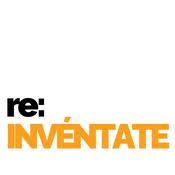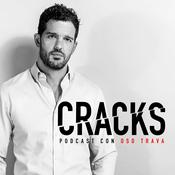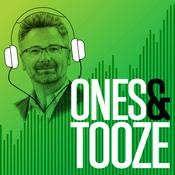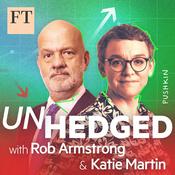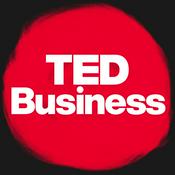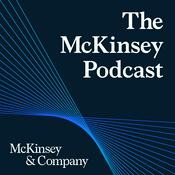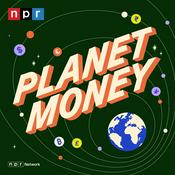232 episodios

Nerd Alert: How Your Brand Can Win the Holidays
18/12/2025 | 10 min
Welcome to Nerd Alert, a series of special episodes bridging the gap between marketing academia and practitioners. We’re breaking down highly involved, complex research into plain language and takeaways any marketer can use. In this episode, Elena and Rob explore how gift-giving experiences shape emotions, relationships, and brand perception. They reveal why the best brands focus on creating memorable experiences rather than just selling products during the holidays. Topics covered: [01:00] "Gift Experience in Marketing: A Systematic Review and Future Research Agenda"[03:00] What marketers get wrong about holiday gifting[05:00] The four key elements of gift exchanges[06:00] Three stages of gift-giving: gestation, presentation, and reformulation[07:00] Why experiential gifts outperform material ones[08:00] Making the giver the hero To learn more, visit marketingarchitects.com/podcast or subscribe to our newsletter at marketingarchitects.com/newsletter. Resources: Tyagi, H., & Rahman, Z. (2025). Gift experience in marketing: A systematic review and future research agenda. Indian Institute of Technology. Get more research-backed marketing strategies by subscribing to The Marketing Architects on Apple Podcasts, Spotify, or wherever you listen to podcasts.

The Long & Short of Measurement with Matt Hultgren
16/12/2025 | 27 min
Measuring marketing's impact is hard. There's no silver bullet. And if someone tells you there is, they're probably selling you something that only tracks clicks.This week, Elena, Angela, and Rob are joined by Chief Analytics Officer Matt Hultgren to tackle one of marketing's most persistent challenges: measurement. They explore why so many campaigns fail before they even launch, how to balance short-term performance with long-term brand building, and why the best marketers use multiple models to find the truth.Topics covered: [02:00] Why human behavior makes measurement messy[04:00] The planning problem causing measurement failures[06:00] Choosing your North Star metric[08:00] Balancing immediate CAC with long-term brand growth[10:00] Using multiple models to triangulate the truth[13:00] Quantifying TV's halo effect across channels[15:00] Incrementality testing vs MMM vs synthetic controls To learn more, visit marketingarchitects.com/podcast or subscribe to our newsletter at marketingarchitects.com/newsletter. Resources: 2025 Marketing Architects Report: https://www.marketingarchitects.com/Long-and-Short Get more research-backed marketing strategies by subscribing to The Marketing Architects on Apple Podcasts, Spotify, or wherever you listen to podcasts.

Nerd Alert: Do Retailer Exclusives Actually Work?
11/12/2025 | 8 min
Welcome to Nerd Alert, a series of special episodes bridging the gap between marketing academia and practitioners. We’re breaking down highly involved, complex research into plain language and takeaways any marketer can use.In this episode, Elena and Rob explore whether "only at Target" labels actually drive sales or if they backfire. They reveal how exclusive features can sometimes make products less appealing when customers see them as trivial or disconnected from real value.Topics covered: [01:00] "Do Products Labeled Retailer Exclusive Affect Consumer Behavior"[02:00] How scarcity influences buying decisions[03:00] Testing exclusivity with vacuums and Blu-Rays[04:00] Why adding more exclusive features can hurt sales[05:00] In-store experiences versus exclusive labels[06:00] When exclusivity feels meaningful versus trivial To learn more, visit marketingarchitects.com/podcast or subscribe to our newsletter at marketingarchitects.com/newsletter. Resources: Upshaw, D., Amyx, D., Upshaw, A., & Hardy, M. (2023). Do products labeled retailer “exclusive” affect consumer behavior?Journal of Marketing Development and Competitiveness Get more research-backed marketing strategies by subscribing to The Marketing Architects on Apple Podcasts, Spotify, or wherever you listen to podcasts.

Confessions of a Reformed Performance Marketer with Ryan Sullivan, GoodRx CMO
09/12/2025 | 43 min
Only 15% of brand assets are truly distinctive. GoodRx broke their industry’s mold with a prairie dog sidekick and singing cowgirl. But behind the bold creative lies a data-driven philosophy that challenges everything performance marketers think they know.This week, Elena, Angela, and Rob sit down with Ryan Sullivan, CMO of GoodRx. Ryan shares his evolution from hardcore performance marketer to someone who questions the very foundations of digital attribution. Learn why he's skeptical of multi-touch attribution, how GoodRx measures success through triangulation, and why increasing "surface area" matters more than hyper-targeting.Topics covered: [05:00] Why brand search attribution is misleading[08:30] The hidden costs of programmatic display advertising[15:00] GoodRx's unique challenge of reaching out-of-market consumers[19:30] Creating distinctive brand assets with the Savings Wrangler[32:00] Building confidence through triangulated measurement[36:00] The concept of "free marketing" and reducing control To learn more, visit marketingarchitects.com/podcast or subscribe to our newsletter at marketingarchitects.com/newsletter. Resources: 2025 eMarketer Article: https://www.emarketer.com/content/goodrx-s-new-feel-good-campaign-seeks-break-through-healthcare-advertising-noiseRyan Sullivan’s LinkedIn: https://www.linkedin.com/in/ryanjsullivan/GoodRx Website: https://www.goodrx.com/ Get more research-backed marketing strategies by subscribing to The Marketing Architects on Apple Podcasts, Spotify, or wherever you listen to podcasts.

Nerd Alert: You Won't Like This Episode
04/12/2025 | 9 min
Welcome to Nerd Alert, a series of special episodes bridging the gap between marketing academia and practitioners. We’re breaking down highly involved, complex research into plain language and takeaways any marketer can use.In this episode, Elena and Rob explore how telling people a product isn't for them can boost interest among the right audience. They discuss why exclusion signals expertise and how persuasive framing builds stronger connections with core customers than traditional persuasive messaging.Topics covered: [01:00] "This Article is Not for Everyone: The Impact of Persuasive Framing on Consumer Response to Product Messages"[02:00] Examples of brands using exclusionary messaging[04:00] Why persuasive ads outperform persuasive ads[05:00] Target specificity and specialized positioning[06:00] The steakhouse billboard and flexing for your audience[07:00] Marketing takeaways: filtering builds credibility To learn more, visit marketingarchitects.com/podcast or subscribe to our newsletter at marketingarchitects.com/newsletter. Resources: Wallach, K. A., Blair, S., & Tanenbaum, J. L. (2025). This article is not for everyone: The impact of dissuasive framing on consumer response to product messages. Journal of Consumer Research. Advance online publication. https://doi.org/10.1093/jcr/ucaf034 Get more research-backed marketing strategies by subscribing to The Marketing Architects on Apple Podcasts, Spotify, or wherever you listen to podcasts.
Más podcasts de Economía y empresa
Podcasts a la moda de Economía y empresa
Acerca de The Marketing Architects
Escucha The Marketing Architects, Dinstinto y muchos más podcasts de todo el mundo con la aplicación de radio.net

Descarga la app gratuita: radio.net
- Añadir radios y podcasts a favoritos
- Transmisión por Wi-Fi y Bluetooth
- Carplay & Android Auto compatible
- Muchas otras funciones de la app
Descarga la app gratuita: radio.net
- Añadir radios y podcasts a favoritos
- Transmisión por Wi-Fi y Bluetooth
- Carplay & Android Auto compatible
- Muchas otras funciones de la app


The Marketing Architects
Descarga la app,
Escucha.


